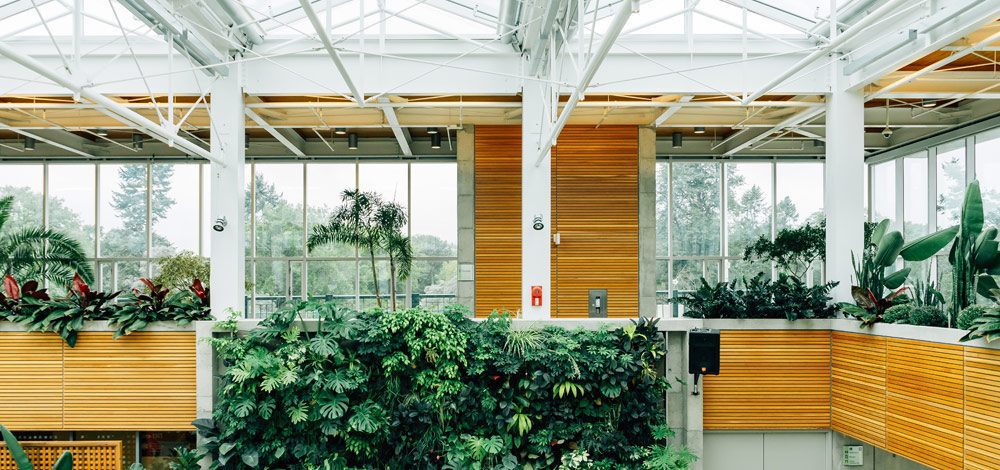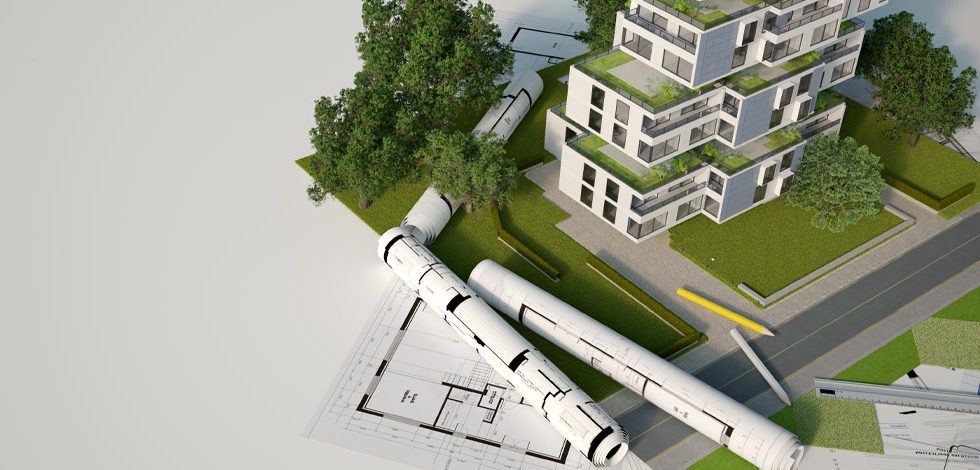The UK is the first G7 nation to set a legally binding target to achieve net zero carbon emissions by 2050. Amid the escalating climate crisis, outgoing PM Theresa May upped the ante from the previous 80% reduction target.
It is not just the construction sector that needs to show rock-solid commitment to that goal. After almost a decade’s preparation, the industry saw the visionary Zero Carbon Homes policy cancelled in July 2015, a few months before implementation. Then the government pulled the plug on the Green Deal to get homes retrofit for an energy-efficient future, after the sluggish programme had finally taken off.
If the goal is to be met, the industry has little more than 10 years to make all new buildings net zero, according to the Committee on Climate Change. The scale of the challenge is massive: the built environment produces 40% of carbon emissions and uses 60% of materials, while some 60% of all waste in the UK comes from the construction industry.
Trends in robotics and pre-manufacturing, digitalisation and alternative materials are reinforcing the sector’s push towards sustainability. There are many exciting developments in hand or on the horizon.
Sustainable energy needs sustainable infrastructure
Wholesale changes to energy-generating infrastructure are required – away from boilers to heat pumps, hydrogen technologies, and district heating schemes, along with more efficient lighting. Improving the energy efficiency of existing buildings and housing stock will call for an even greener new deal.
Combined heat and energy plants – as in Lendlease’s estate regeneration project at Elephant & Castle in London – and on-site renewables such as solar power, will become common.
The aim must be to construct energy-positive buildings that give back more than they consume over their lifetime. Skanska, for instance, says its European development business will be the first worldwide to cover office buildings with semi-transparent perovskite solar cells on a commercial scale. It began a trial in 2018 with Polish tech firm Saule Technologies, and aims to revolutionise the industry’s approach to energy self-sufficient buildings.
Funding from the UK Research and Innovation challenge is supporting a series of projects investigating how buildings could be powered through active generation and storage. The fund also backed HIPER Pile, a project led by piling specialist Keltbray to develop new piling methods that integrate energy and rainwater re-use when laying foundations.
There is huge scope for material producers to harness technology to improve energy efficiency, switch to lower-carbon fuels and renewable sources. Investment in battery storage and other smart solutions will be required. But there are financial as well as carbon savings to be made. Aggregate Industries says it was the first in the UK to automatically optimise its electricity demand in real-time via a dynamic demand management platform that uses AI to cut bills and energy intensity by 10%.
Construction site of the future
Decarbonising energy use on construction sites, where diesel power is the dominant power source, is an even more daunting prospect. Major contractors have trialled photovoltaic lighting towers and hybrid generators but the technology is still modest and small-scale. Network Rail and Colas have shown the way to the ‘site of the future’. They used solar-powered lighting and generation to achieve 97% diesel-free operation across the 21-acre rail renewal site at Llanwern in South Wales.
As for mobile plant, electric excavators have started to appear, as plant hirers and principal contractors such as Laing O’Rourke and Murphy show interest. Corporate commitment, government deadlines or both will be needed if plant suppliers are to catch up with e-carmakers.
On the road, contractors are still at the stage of smallscale trials. FM Conway began trialling two electric vans in November 2018, ahead of London’s Ultra Low Emission Zone (ULEZ) launch in April 2019. Hybrid electric vans proved they were a viable alternative for construction firms Clancy Plant, Interserve, and Mears Group in a recent 12-month Ford Motor Company trial.
As ULEZs spread, contractors working in those cities will be in the vanguard of the converted, ahead of the 2040 deadline for new cars and vans. Though Tesla has launched its all-electric truck, the Road to Zero for heavy haulage will be longer.
Construction waste needs to be addressed
Progress is being made in tackling construction’s huge waste stream. Some housebuilders, like Barratt Developments, and highway contractors such as Eurovia/Ringway are diverting as much as 97% of waste from landfill.
The highways industry can reuse more road planings and other materials arising from maintenance in their works, including energy-saving ‘cold’ and ‘warm’ alternatives to hot rolled asphalt. Wastes from other sources are also being recycled into roads and footways.
Two of the most problematic waste streams are plastics and tyres. Tarmac has launched the first commercial asphalt product containing rubber from waste tyres. After years of one-off trials by many companies, it’s hoped the highway authorities will bend their rigidly prescriptive specifications to adopt a product proven in other countries. As more local authorities declare a climate crisis, they can pave the way to a lower-carbon network.
Concrete is responsible for at least 5% of humanity’s carbon footprint.
Concrete is the most widely used material on earth, apart from water. (Water also needs to rise up the sustainability agenda as concerns grow about regional as well as local supply stress.) Several studies indicate concrete is responsible for at least 5% of humanity’s carbon footprint. Yet the cement and concrete sector can feasibly cut emissions by 80% by 2050, according to Swiss research. The cost would be relatively low with some financial savings to be made, but it will require concerted effort across the entire supply chain. To get to net zero, producers would require carbon capture and storage. We expect producers to continue investing in carbon reduction and wider production of alternatives, such as geopolymer concrete.
Sustainable building design should be considered
The most fundamental mindset change will be designing new buildings to be net-zero carbon. There are encouraging signs that the sector is up for the challenge. In a UK survey, almost two-thirds of companies were confident they could achieve this before 2050.
BREEAM, the international benchmark for assessing the sustainability of buildings and infrastructure, is recognising and promoting more environmentally responsible design. BIM can also support this trend further. Additional data on traceability, responsible sourcing and carbon footprinting can be embedded in BIM objects (product specifications) to provide a more complete understanding and help to deliver a sustainable built environment. As can initiatives such as the Supply Chain Sustainability School, collaboration between major UK contractors to provide free training to help suppliers become more sustainable.
Willmott Dixon reports that it has been carbon-neutral for six years, having reduced the carbon intensity of its operations (relative to turnover) by 57% compared since 2010. Skanska has set a target to be carbon neutral throughout its supply chain by 2045.
Many other contractors and suppliers are taking, and will continue to take, valuable steps and strides in sustainability. The national commitment to net zero means that the whole sector – some 280,000 companies widely varying in size and specialisms – must follow suit to make truly sustainable practice business as usual.
For more trends in construction, download your copy of “Constructive change” here:

















No Comments